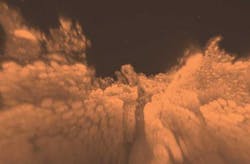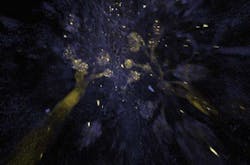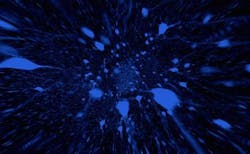New method yields optically transparent tissue for light microscopy observation
Scientists at the California Institute of Technology (Caltech; Pasadena, CA) have developed a way to make an organism's entire body clear for observation using standard optical methods such as confocal microscopy. The method could offer new insight into the cell-by-cell makeup of organisms—and the promise of novel medical diagnostic applications.
Related: Deeper focus in microscopic bioimaging
"Large volumes of tissue are not optically transparent—you can't see through them," says Viviana Gradinaru, an assistant professor of biology at Caltech and the principal investigator of the team of scientists that developed the method. Lipids throughout cells provide structural support, but they also prevent light from passing through the cells. "So, if we need to see individual cells within a large volume of tissue"—within a mouse kidney, for example, or a human tumor biopsy—"we have to slice the tissue very thin, separately image each slice with a microscope, and put all of the images back together with a computer. It's a very time-consuming process and it is error-prone, especially if you look to map long axons or sparse cell populations such as stem cells or tumor cells," she adds.
The new approach builds off a technique known as CLARITY that was previously developed by Gradinaru and her collaborators to create a transparent whole-brain specimen. With the CLARITY method, a rodent brain is infused with a solution of lipid-dissolving detergents and hydrogel—a water-based polymer gel that provides structural support—thus "clearing" the tissue, but leaving its 3D architecture intact for study.
The refined technique optimizes the CLARITY concept so that it can be used to clear other organs besides the brain, and even whole organisms. By making clever use of an organism's own network of blood vessels, Gradinaru and her colleagues—including scientific researcher Bin Yang and postdoctoral scholar Jennifer Treweek, coauthors on the paper published in the journal Cell—can quickly deliver the lipid-dissolving hydrogel and chemical solution throughout the body.
Gradinaru and her colleagues have dubbed their method perfusion-assisted agent release in situ (PARS). Once an organ or whole body has been made transparent, standard microscopy techniques can be used to easily look through a thick mass of tissue to view single cells that are genetically marked with fluorescent proteins. Even without such genetically introduced fluorescent proteins, however, the PARS technique can be used to deliver stains and dyes to individual cell types of interest. When whole-body clearing is not necessary the method works just as well on individual organs by using a technique called PACT, short for passive clarity technique.
To find out if stripping the lipids from cells also removes other potential molecules of interest—such as proteins, DNA, and RNA—Gradinaru and her team collaborated with Long Cai, an assistant professor of chemistry at Caltech, and his lab. The two groups found that strands of RNA are indeed still present and can be detected with single-molecule resolution in the cells of the transparent organisms.
The Cell paper focuses on the use of PACT and PARS as research tools for studying disease and development in research organisms. However, Gradinaru and her UCLA collaborator Rajan Kulkarni, have already found a diagnostic medical application for the methods. Using the techniques on a biopsy from a human skin tumor, the researchers were able to view the distribution of individual tumor cells within a tissue mass. In the future, Gradinaru says, the methods could be used in the clinic for the rapid detection of cancer cells in biopsy samples.
The ability to make an entire organism transparent while retaining its structural and genetic integrity has broad-ranging applications, Gradinaru says. For example, the neurons of the peripheral nervous system could be mapped throughout a whole body, as could the distribution of viruses, such as HIV, in an animal model.
Gradinaru also leads Caltech's Beckman Institute BIONIC center for optogenetics and tissue clearing and plans to offer training sessions to researchers interested in learning how to use PACT and PARS in their own labs.
To view the paper published in Cell, please visit http://authors.library.caltech.edu/47811.
-----
Don't miss Strategies in Biophotonics, a conference and exhibition dedicated to development and commercialization of bio-optics and biophotonics technologies!
Follow us on Twitter, 'like' us on Facebook, and join our group on LinkedIn
Subscribe now to BioOptics World magazine; it's free!



